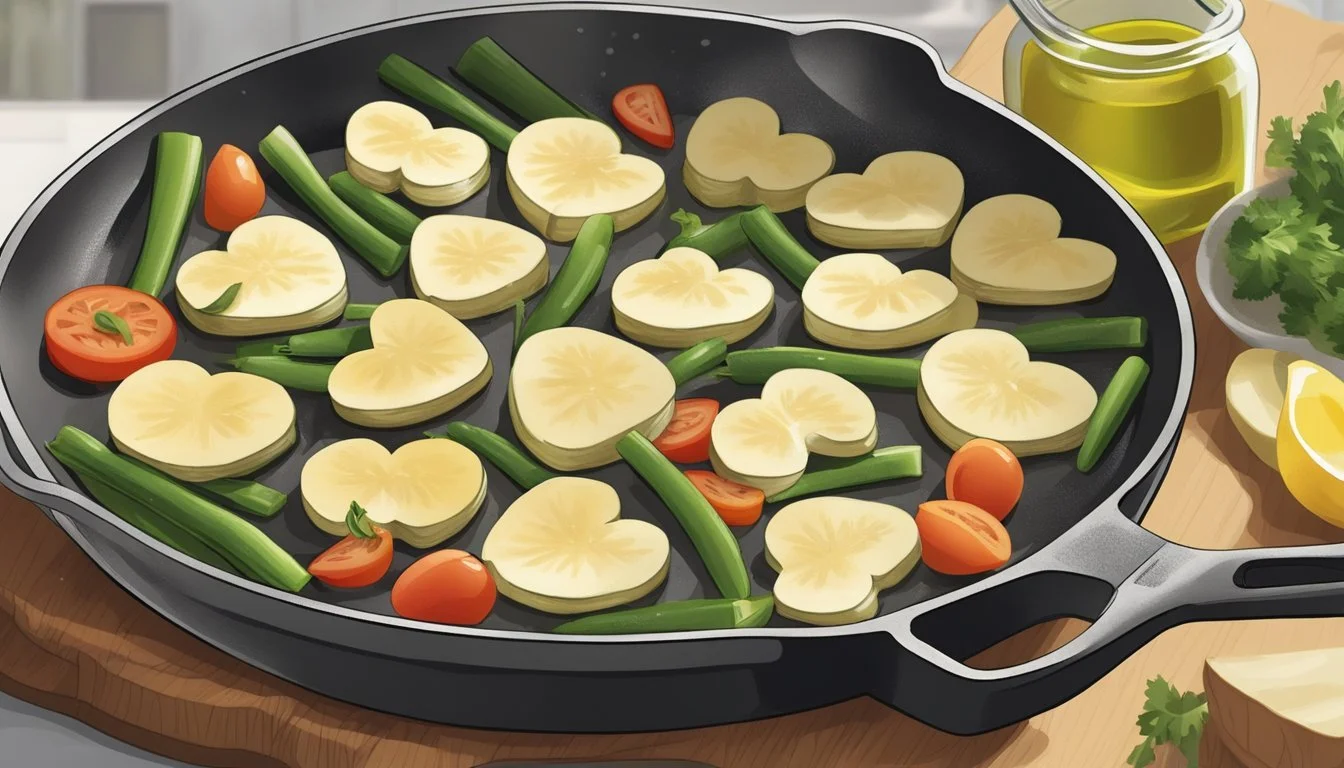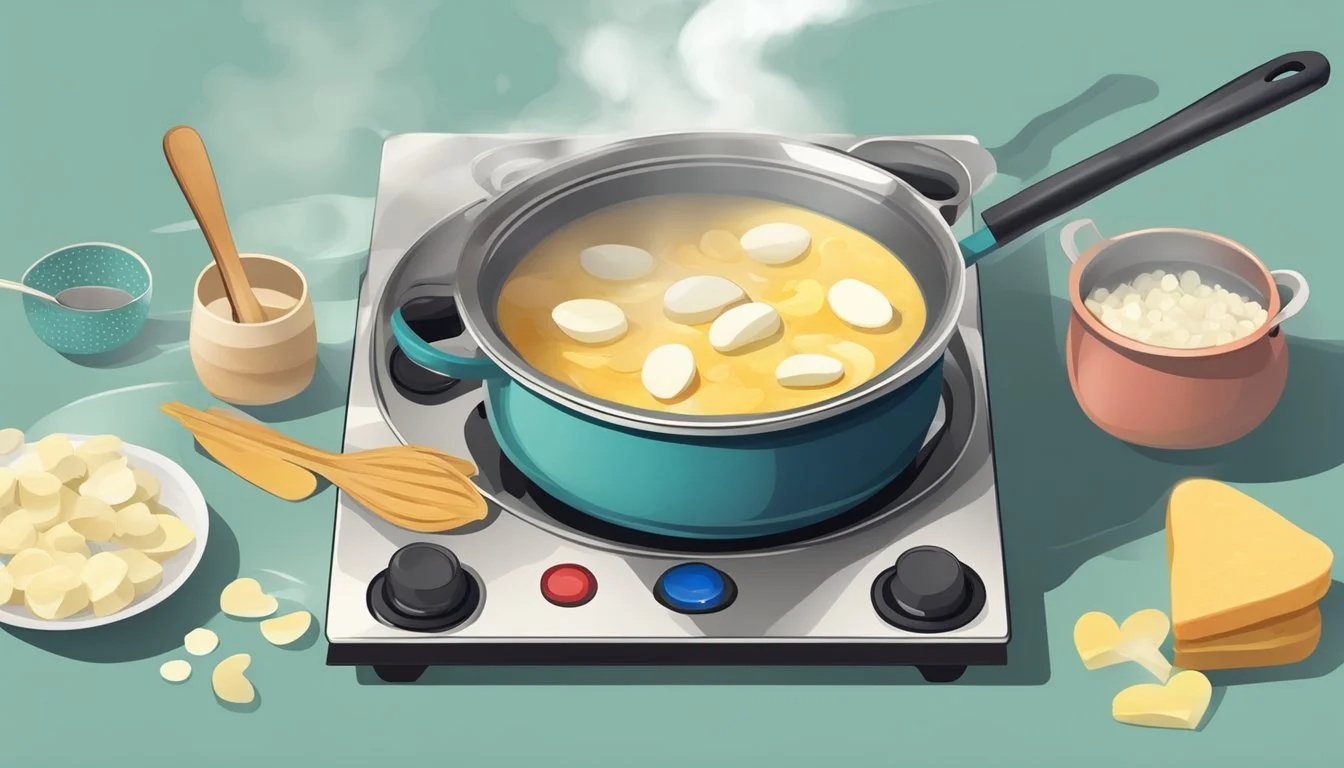How to Reheat Gluten-Free Hearts of Palm
Best Techniques for Perfect Results
Reheating gluten-free hearts of palm doesn't have to be a daunting task. Whether incorporating them into tacos, pasta, or dips, the process is straightforward and ensures your dishes stay delicious. To reheat hearts of palm effectively, use a gentle heat source like a microwave or a stovetop to preserve their texture and flavor.
For best results, place the hearts of palm in a microwave-safe dish and heat in short intervals, checking the temperature frequently. This method prevents them from becoming rubbery or losing their delicate taste. Alternatively, gently warming them in a skillet with a touch of olive oil can bring out their natural flavors while maintaining their firm yet tender consistency.
Incorporating reheated hearts of palm into your gluten-free meals can keep your dietary needs on track without sacrificing taste or quality. Hearts of palm pasta, for example, can be quickly and easily reheated, making it an ideal option for those following gluten-free and low-carb diets.
Understanding Hearts of Palm
Hearts of palm are derived from the inner core of certain palm trees. They are often sourced from species like açai, coconut, and peach palms.
This vegetable, resembling white asparagus or artichoke hearts in appearance, has a delicate flavor and a tender texture.
Hearts of palm are valued for their nutritional benefits. They are low in calories and carbs while being rich in fiber and protein.
Nutrients found in hearts of palm include:
Potassium
Vitamin C
Folate
Magnesium
Calcium
Iron
These nutrients make hearts of palm a healthy choice for various dietary needs, including for individuals managing diabetes and pregnant women for their nutrient requirements.
Among the notable brands, Palmini is popular for its heart of palm-based products like pasta and rice.
Due to their high fiber content, they can aid in digestive health and reduce inflammation.
Their low-calorie content and satisfying taste make hearts of palm a versatile ingredient in gluten-free and plant-based cooking.
Benefits of Gluten-Free Hearts of Palm
Gluten-free hearts of palm offer unique dietary benefits, particularly for individuals managing specific health conditions and those focused on weight management. This section discusses how this versatile ingredient can support various health goals.
Dietary Advantages for Specific Health Conditions
Hearts of palm are naturally gluten-free, making them suitable for individuals with gluten sensitivity or celiac disease. These conditions require strict avoidance of gluten, which is found in wheat, rye, and barley. Including gluten-free hearts of palm in the diet helps diversify meal options while ensuring adherence to dietary restrictions.
They are also low in carbohydrates and calories, fitting well into keto and low-carb diets. This makes hearts of palm a great alternative to traditional pasta, helping to maintain blood sugar levels and minimize carbohydrate intake. The high fiber content—3.5 grams per cup—supports digestive health, reduces inflammation, and can help manage chronic conditions like diabetes and heart disease.
Weight Management and Nutritional Value
Hearts of palm are low in calories and fat, making them a beneficial addition to weight management plans. A single cup provides a significant portion of daily fiber needs, which can promote feelings of fullness and reduce overall calorie intake. This can be particularly helpful for those trying to lose or maintain weight.
Their nutritious profile includes essential vitamins and minerals such as vitamin C, calcium, and potassium. These nutrients are vital for maintaining bone health, regulating blood pressure, and supporting the immune system. Using hearts of palm as a substitute for higher-calorie, gluten-containing foods can aid in reducing overall caloric and carbohydrate consumption without sacrificing nutritional quality.
By incorporating gluten-free hearts of palm into their diet, individuals can enjoy a healthy, low-calorie, and nutrient-dense food that supports both specific health conditions and overall weight management.
Preparation Basics Before Reheating
To reheat gluten-free hearts of palm, it's crucial to start with proper preparation.
Instructions:
Drain and Rinse: Ensure the hearts of palm are thoroughly drained and rinsed. This step helps eliminate excess liquid that can make reheated dishes mushy.
Season and Flavor: Add a small amount of olive oil, salt, and minced garlic. These ingredients enhance the flavor without overpowering the delicate taste of hearts of palm.
Preheat Appliances: Preheat your oven to 350°F or ensure your stove and microwave are ready. Proper temperature control ensures even reheating.
Choose Reheating Method:
Oven: Place the hearts of palm in an oven-safe dish and cover with foil. This method is perfect for dishes such as parmesan, baked casseroles, or pasta sauce-based recipes.
Stovetop: Use a skillet for sautéing with a bit of olive oil to gently warm without overcooking. Ideal for adding to soups or reheating alongside grilled vegetables.
Microwave: Quick and convenient. Place in a microwave-safe container, loosely cover, and heat in short intervals to avoid overheating.
Additional Tips:
For salads, serve the hearts of palm cold to maintain crisp texture.
If incorporating into a hot dish, such as a cooked pasta sauce, add towards the end of reheating to preserve firmness.
Using these preparation basics helps retain the texture and flavor whether you’re adding to a grilled dish, soup, pasta sauce, or simply enjoying on its own.
Reheating Methods for Optimal Taste and Texture
To maintain the delicious taste and pleasant texture of gluten-free hearts of palm pasta, follow these proven reheating techniques that ensure the pasta remains moist and flavorful.
Oven-Based Technique
Preheat the oven to 350°F (175°C).
Place the hearts of palm pasta in an oven-safe dish. Add a small amount of water or butter, depending on your recipe, to prevent dryness. Cover the dish with aluminum foil to trap moisture, ensuring the pasta retains its flavor and texture.
Bake for about 10-12 minutes, checking periodically. If the pasta includes a sauce, stir halfway through to distribute heat evenly. For a cheesy touch, sprinkle parmesan cheese or mozzarella cheese on top before reheating.
Microwave Method
To reheat in the microwave, transfer the hearts of palm pasta to a microwave-safe bowl.
Add 1-2 tablespoons of water, sauce, or melted butter to keep the pasta moist. Cover the bowl with a microwave-safe lid or wrap, leaving a small vent for steam to escape.
Microwave on high for 1-2 minutes, stirring halfway through. Check for desired warmth and texture. Season with black pepper or additional cheese after reheating to enhance the flavor.
Stovetop Reheating
Reheating on the stove offers control over the heating process and avoids overcooking.
Place the hearts of palm pasta in a non-stick skillet over medium heat. Add a splash of water, butter, or sauce and gently stir. Cook for 5-7 minutes, stirring occasionally.
This method helps the pasta absorb the added liquid, ensuring it stays flavorful. If the recipe includes parmesan cheese or mozzarella cheese, add it during the last minute of reheating for a melted, delicious topping.
Customizing Flavors with Sauces and Seasonings
To enhance the taste of gluten-free hearts of palm, a variety of sauces and seasonings can be used.
Hearts of palm can be paired with garlic, basil, and olive oil to create an aromatic base. For an Italian twist, add oregano and Italian seasoning.
A sprinkle of red pepper flakes can introduce a hint of spice, balancing the mild flavor of hearts of palm. Incorporating fresh chopped parsley or basil leaves brightens the dish.
Commonly used cheeses such as ricotta or ricotta cheese add a creamy texture.
Here is a tabular representation of suggested pairings:
Ingredient Usage Garlic Sauté with olive oil Basil, Oregano Add to sauces or sprinkle on top Italian seasoning Mix in for an aromatic flavor Red pepper flakes Sprinkle for a mild spice Chopped parsley Garnish atop the finished dish Basil leaves Mix in fresh or use as garnish Ricotta cheese Stir in for a creamy texture
Experimenting with these elements allows for varied and delightful results.
Hearts of Palm as a Pasta Alternative
Hearts of palm pasta offers a unique, low-carb, and gluten-free alternative to regular pasta. This keto-friendly option can be used in various dishes, providing a similar texture to traditional noodles without the high carbohydrates.
Substituting in Recipes
Hearts of palm pasta can replace regular pasta in most recipes. For example, hearts of palm lasagna noodles can be used in lasagna, layering them with your favorite sauce and cheese.
When replacing traditional noodles, adjust cooking time since hearts of palm is usually precooked, requiring only heating through. To prepare, simply drain the jarred or packaged hearts of palm noodles, rinse them, and add to your dish. Their neutral flavor absorbs sauces well, making them versatile.
For soups and pasta salads, they add a crisp, fresh texture. Replace standard pasta with hearts of palm pasta in cold dishes by tossing them in tangy balsamic or vinaigrettes. They maintain their firmness better than some other vegetable-based noodles, making them a durable option for meal preps.
Creating New Dish Variations
Get creative with hearts of palm pasta to create new and exciting dishes. Palmini lasagna noodles work excellently in layered casseroles. They pair well with various sauces, from marinara to Alfredo. Experiment with low-carb pasta by mixing traditional ingredients like basil, tomatoes, and garlic.
Try a Mediterranean flair by combining hearts of palm pasta with olives, feta, and a lemon-oregano dressing. This elevates the dish and highlights the pasta's unique qualities.
For a more Asian-inspired dish, consider using these noodles in stir-fries with sesame oil, soy sauce, and vegetables. This swap reduces carbs without compromising on flavor or texture.
Hearts of palm pasta's adaptability allows for endless culinary creativity, providing a satisfying and health-conscious pasta alternative.
Serving and Pairing
Reheated gluten-free hearts of palm can be made into delectable dishes with the right balance of flavors and complementary ingredients. These ideas will help elevate the meal.
Balancing the Plate
Serve reheated gluten-free hearts of palm with a diverse range of foods to create an enticing plate. For a nutritious meal, pair with grilled chicken or sauteed shrimp. The mild flavor of hearts of palm complements these proteins well.
Vegetables such as roasted bell peppers, zucchini, and cherry tomatoes add color and nutrients. Drizzle with a light vinaigrette or a squeeze of lemon to enhance the flavors.
For a carb-conscious option, serve with cauliflower rice or a simple quinoa salad. This keeps the meal gluten-free while adding texture and fiber.
Complementary Ingredients for Reinvention
Incorporate reheated hearts of palm into creative dishes by using complementary ingredients. Toss them into a salad with mixed greens, chopped green onions, and fresh cilantro. Dress with a tangy lemon-herb dressing for a bright flavor.
For an indulgent twist, mix hearts of palm with grated parmesan and mozzarella. Bake them into a low-carb casserole with ground beef or a vegetarian crumble.
Another option is to blend them into a creamy dip mixed with Greek yogurt, garlic, and herbs, serving alongside gluten-free crackers or vegetable sticks. This creates a new appetizer that is both healthy and delicious.
Storage and Food Safety
For canned or jarred hearts of palm, store unopened cans or jars in a cool, dry place. Once opened, transfer any unused hearts of palm to an airtight container and refrigerate.
When storing hearts of palm dishes that include ingredients like mozzarella cheese, parmesan cheese, or ricotta cheese, ensure they are kept in airtight containers. This prevents cross-contamination and keeps the flavors intact.
Fresh hearts of palm should be refrigerated immediately in a produce drawer. Keep them wrapped in a damp paper towel inside a plastic bag to maintain freshness.
Hearts of palm dishes, whether vegan, vegetarian, or mixed with other ingredients, should be consumed within 3-4 days if refrigerated properly.
Check for any signs of spoilage such as a sour smell, slimy texture, or discoloration before consumption. When in doubt, it's better to discard any questionable products.
For reheating, ensure that the hearts of palm reach an internal temperature of at least 165°F (74°C) to ensure food safety.
Recipe Ideas
Hearts of Palm Lasagna
Ingredients:
1 jar of hearts of palm lasagna noodles
2 cups marinara sauce
1 cup ricotta cheese
1 cup shredded mozzarella
Fresh basil leaves
Instructions:
Preheat oven to 375°F.
Layer hearts of palm lasagna noodles, marinara sauce, ricotta, and mozzarella in a baking dish.
Repeat layers and top with cheese.
Bake for 25-30 minutes.
Garnish with fresh basil.
Expert Tip: Use a mix of cheeses for extra flavor.
Vegan Hearts of Palm Tacos
Ingredients:
1 can hearts of palm, sliced
1 bell pepper, sliced
1 onion, sliced
Corn tortillas
Favorite taco toppings
Instructions:
Sauté hearts of palm, bell pepper, and onion until tender.
Warm corn tortillas in a skillet.
Fill tortillas with sautéed mixture.
Add preferred toppings.
Hearts of Palm Pasta
Ingredients:
1 pack hearts of palm pasta (Palmini)
2 tbsp olive oil
3 garlic cloves, sliced
Salt and pepper to taste
Fresh basil leaves
Instructions:
Heat olive oil in a skillet over medium heat.
Add garlic and cook until golden.
Stir in hearts of palm pasta and season with salt and pepper.
Cook until heated through.
Garnish with fresh basil leaves.
Cooking Tips from the Experts
Expert Tip: To reheat gluten-free hearts of palm pasta, start with a preheated oven at 350°F (175°C). Spread the pasta in a single layer on a baking sheet lined with parchment paper.
Microwaving Method: Place the pasta in a microwave-safe bowl. Add a tablespoon of water to keep it moist. Cover with a microwave-safe lid, leaving a small vent. Heat for 2-3 minutes.
Stovetop Advice: Heat some olive oil in a skillet over medium heat. Add the pasta and stir frequently. Cook until heated through, approximately 5 minutes. Optionally, sprinkle with grated parmesan for extra flavor.
Using an oven can help retain the texture, especially if the pasta was originally baked. Preheating ensures an even heating process. The variety of methods provide flexibility based on available kitchen tools.
Review different reheating techniques and decide which one suits your needs best. Each option offers a way to maintain the pasta's quality without compromising on taste or texture.












